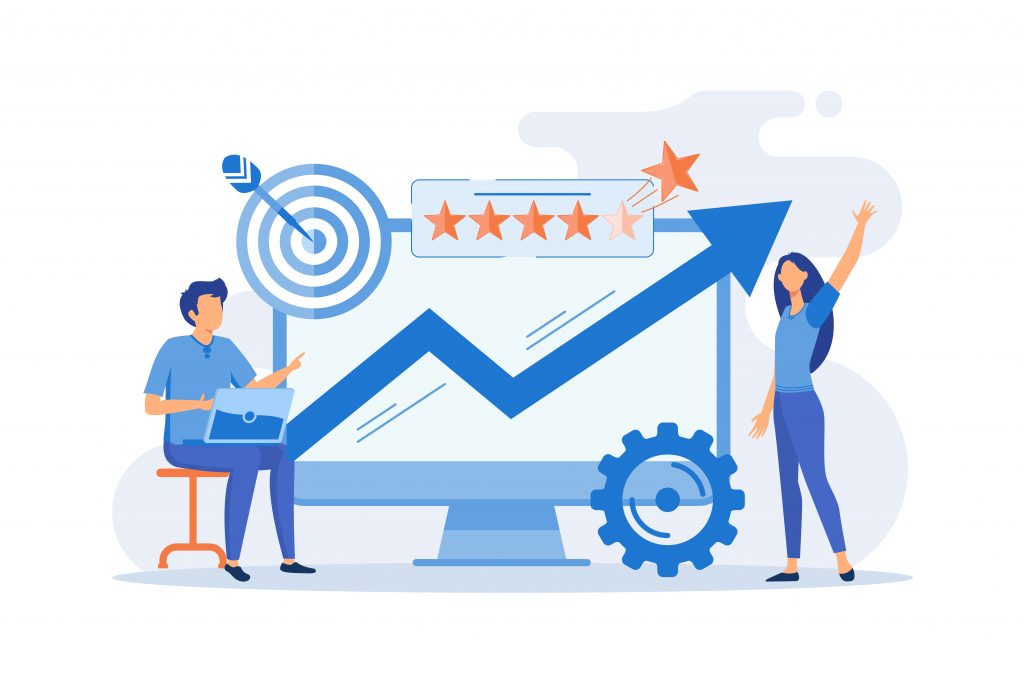
Hire & Keep Top Talent with High-Performance Management
In an ever-changing global economy, how can employers create a workplace culture that supports and encourages high levels of employee productivity, satisfaction, and retention?

Performance management can be a complex area to master because the industry is constantly changing and evolving. Every year, a new performance management trend pops up, and HR departments across the country jump on the bandwagon.
However, most businesses are evolving so quickly that the goals set at the beginning of the year might change by the end of it. Because of this fast pace, employees sometimes feel disengaged, leaving managers dissatisfied with the results.
Thankfully, an increasing number of companies realize the importance (and benefits) of effective performance management systems. Implementing an effective performance management system is the first step toward revitalizing and improving the existing performance processes.
Even though many employers think of the annual performance review as the core of performance management, that’s just one aspect of it. In fact, it is an ongoing method of improving performance by:
In practice, a robust performance management system aligns and pursues measurable goals. It also creates a constant feedback loop for coaching and promotes engagement through recognition. With the introduction of a performance management system, employers conduct meaningful performance discussions more regularly, which means employees can improve and climb up the ladder faster.
The most important thing for managers to know is that performance management is not a once-a-year activity. On the contrary, it is a perpetual cycle of micro-managing activities that, in the end, will benefit the employees. It’s a process created out of four stages that establish a baseline of communication between the employee and the employer.

Michael Armstrong best describes these stages in his Handbook of Performance Management:
Let’s break down these stages.
The goal is to set smart and achievable objectives. Each objective should specifically contribute to the achievement of one or more of the organization’s goals. After the goals are set, both the employee and the employer agree on the personal development plan.
In the act phase, the employee strives to achieve the previously discussed objectives. After this phase is in motion, the employer can implement a personal development plan. Note: Personal development planning should consider what behaviors, abilities, or knowledge a person needs to develop to achieve their goals and maintain the company’s values.
During this process, the employer tracks the employee’s progress and maintains communication by providing regular feedback. If there are milestones that the worker will need to achieve, the manager can mitigate the obstacles by providing day-to-day coaching. Managers can employ coaching to assist team members in identifying learning opportunities and fostering performance improvement.
The employer reviews the employee’s achievements, identifies learning possibilities, and gives feedback. After completing the review, the employer should discuss career goals and take on actions so that the work process can carry on.
Knowing the basics of how a performance is executed is a valuable resource for managers who need to prepare for implementation.
In reality, the stages do not flow one after the other. On the contrary, they should be continuous throughout the year. Managers must communicate the reasons for the adjustment and consistently share performance management objectives with their employees.
Performance management should be a perpetual process that allows discussions, improvements, and adjustments based on employee performance.

These five elements unveil the critical performance management points that managers need to stick by. By applying them in employee appraisals, there’s no room for mistakes and miscommunication.
Managers need to set goals that are meaningful and well-understood. Employees should understand why these individual goals are essential and how they relate to the organizational objectives.
When employees know and understand how their jobs matter, they care more about their jobs. In fact, only 7% of employees are fully aware of their organization’s corporate plans and what is required of them to help them achieve these goals.
When employees are placed in the driver’s seat and given the freedom to develop their priorities, they feel a greater sense of autonomy and ownership over their role. This inevitably leads to better employee performance.
Employees expect and deserve their leaders to be transparent and honest at all times. Communication is crucial for building and maintaining healthy relationships with coworkers and managers. Even when it is difficult or unpleasant to communicate, regular feedback and open discussions are beneficial.
An effective performance management system should make employee recognition and compensation a high priority. Employees need to feel appreciated for the effort they put in. If employee recognition isn’t a top priority, it will almost certainly harm the company’s turnover.
The more frequent and straightforward the feedback, the better will the employee performs. If employees are well-informed about their performance, they tend to improve and prosper.
No ambitious top performer wants to stay with a company for the long haul without perfecting and developing their skills. Employees value development, not to mention that companies benefit when their employees are more skilled and competent.
When these elements are put into work, team building will not be an out of work experience. The shire process will form close connections and trust among employees and managers. And with that, move the work process to a more productive level and drive the business in the right direction.

Many performance management software solutions on the market offer a simplified approach and manageable routine that can boost performance. According to current projections, the talent management industry will be worth $16 billion by 2024, with a 16 percent annual growth rate.
Performance management tools help companies track employee performance consistently and measurably. They offer the best opportunity to manage teams, set smart goals, regularly analyze performance, and reward excellence.
They include a complete system of goals, reflection, and rewards that enable teams to do their best work. The multifunctionality contained in the performance management tools also provides context for individual performance.
Here are the top 10 best performance management systems on the market:
Oracle HCM
Workday
Namely
Engagedly
EmpXtracks
Bizmerlin
Suppose the company decides to create a long-term performance plan for the employees and the team. In that case, a performance management solution can keep the data centralized and ensure managers don’t miss out on crucial points.
Today’s top workplaces are more open, engaging, and employee-focused than ever before. Companies evolved past old-school approaches to employee performance reviews, and for a good reason. When the coronavirus threat became apparent last year, feedback became much more difficult for companies across the country.
In 2022, there’s no doubt that companies have to adjust their typical methods when it comes to hiring talented employees so they can stay viable in this increasingly competitive and volatile market.
Therefore, a performance management system’s ultimate goal is to retain talented employees by enabling their growth.
Performance management means supporting employees continuously, not only through annual performance reviews. It must be a day-to-day activity. Continuous mutual collaboration and understanding can give workers a sense of appreciation and belonging.
Browse our curated list of vendors to find the best solution for your needs.
Subscribe to our newsletter for the latest trends, expert tips, and workplace insights!

In an ever-changing global economy, how can employers create a workplace culture that supports and encourages high levels of employee productivity, satisfaction, and retention?

How can the gap between employee and employer perceptions of productivity in a hybrid work environment be bridged?

Explore effective performance management models tailored to your company’s needs. Discover strategies that drive employee growth and organizational success, ensuring a dynamic and productive work environment.

From enhanced feedback to goal tracking, discover the tools reshaping employee performance. Elevate your workforce with performance management applications for a thriving, high-performing team.
Used by most of the top employee benefits consultants in the US, Shortlister is where you can find, research and select HR and benefits vendors for your clients.
Shortlister helps you reach your ideal prospects. Claim your free account to control your message and receive employer, consultant and health plan leads.